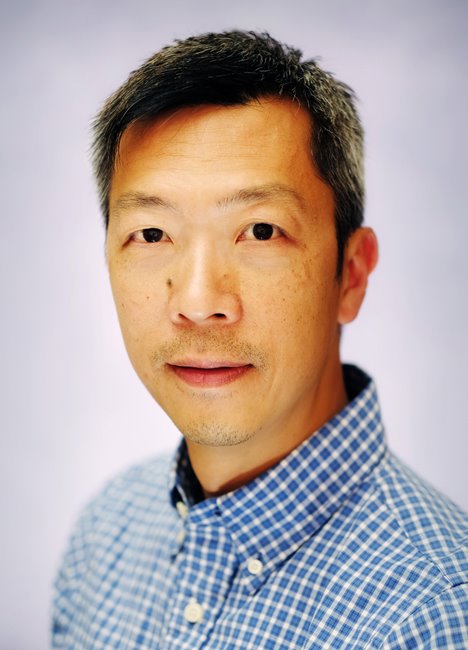Lotomau Fiafia (72), a community elder, stands with his grandson John at the point where he remembers the shoreline used to be when he was a boy. Salia Bay, Kioa Island, Fiji.
Experiences of individuals like Lotomau Fiafia provide first-hand insight into the consequences of rising sea levels on people’s ways of life. His story emphasizes the magnitude of change that has taken place in just one lifetime, and makes the climate crisis tangible to a wider audience.
Global mean sea level rise has more than doubled from 1.4 millimeters a year between 1901 and 1990, to 3.6 millimeters a year from 2006 to 2015, according to the Intergovernmental Panel on Climate Change. In Fiji, the rise is even faster: to around 4 millimeters per year since 1993, and accelerating. Though such amounts may seem small, this mounting increase, together with the erosion of coastline it causes, poses a threat to flat, low-lying land masses such as Kioa Island.
The 500-strong community on Kioa Island has grown from a settlement of people who sought refuge in the 1940s from rising sea levels on Tuvalu, an island nation to the north of Fiji. Now, their fishing and farming economy is threatened again, as increasingly eroding shorelines mean that they and more than 600 communities around Fiji could be forced to relocate in coming years. The deeper waters inhabited by fish, a staple of the local diet, are now further from the shoreline. In the past, residents would fish on the coast, but must now head far out for a catch. In addition, corals have bleached and some fish no longer survive in the island reef. Essential plants like coconuts and pandanus no longer grow on the beach, affecting food and medicine sources.
Kioa has symbolic significance, as its community has descended from the Tuvaluans who sought refuge from rising sea levels in the past. In October 2022, Pacific and Oceania leaders, Indigenous community representatives, and activists met on the island, to discuss and draft the Kioa Climate Emergency Declaration. The document called for urgent climate action to safeguard the Pacific region and its people from the escalating impacts of the climate crisis, protecting it for future generations.
Are you a photographer and/or passionate about press freedom? Sign up for our newsletter to stay updated on our annual contest and to hear about exhibitions near you.

